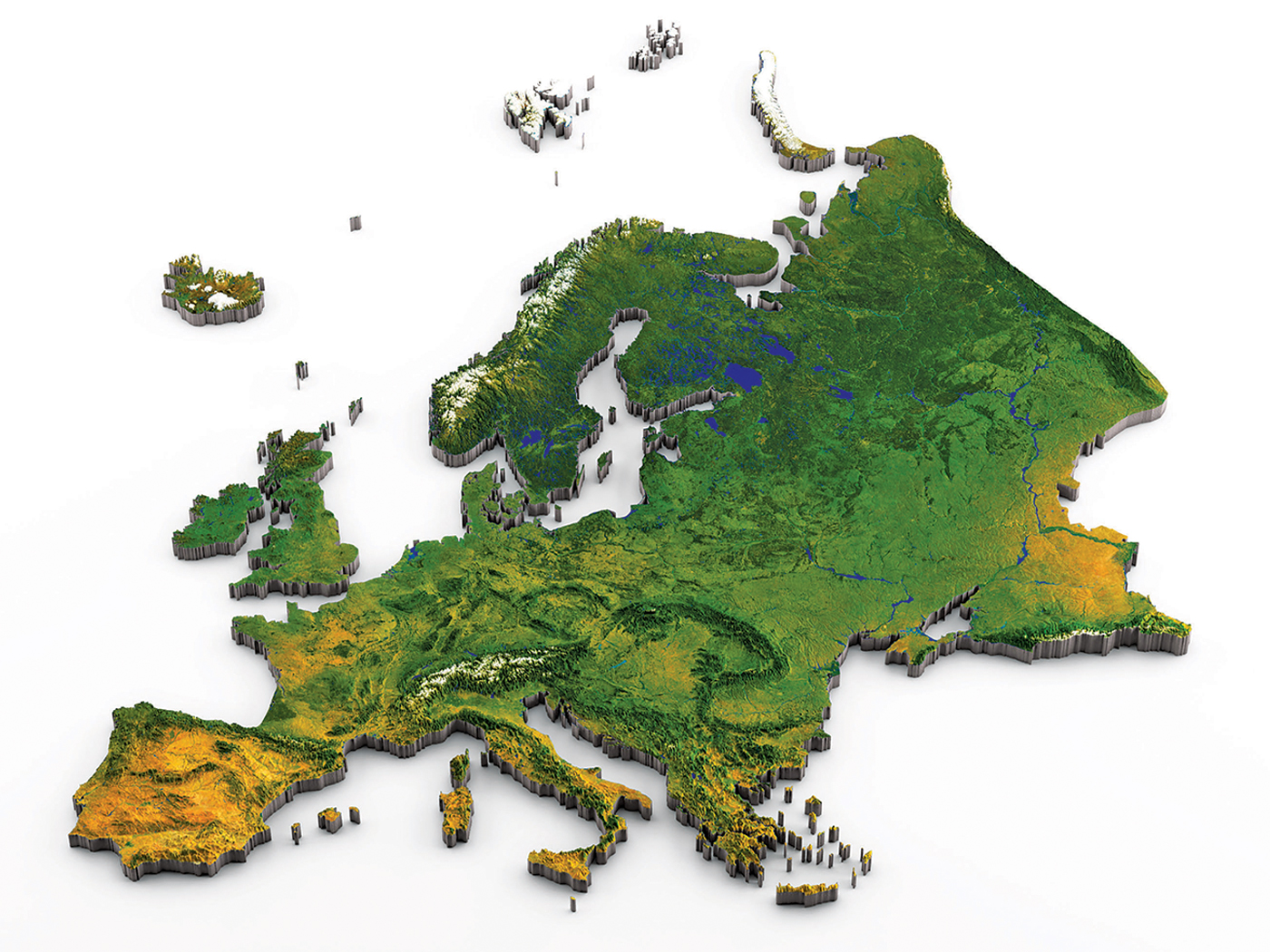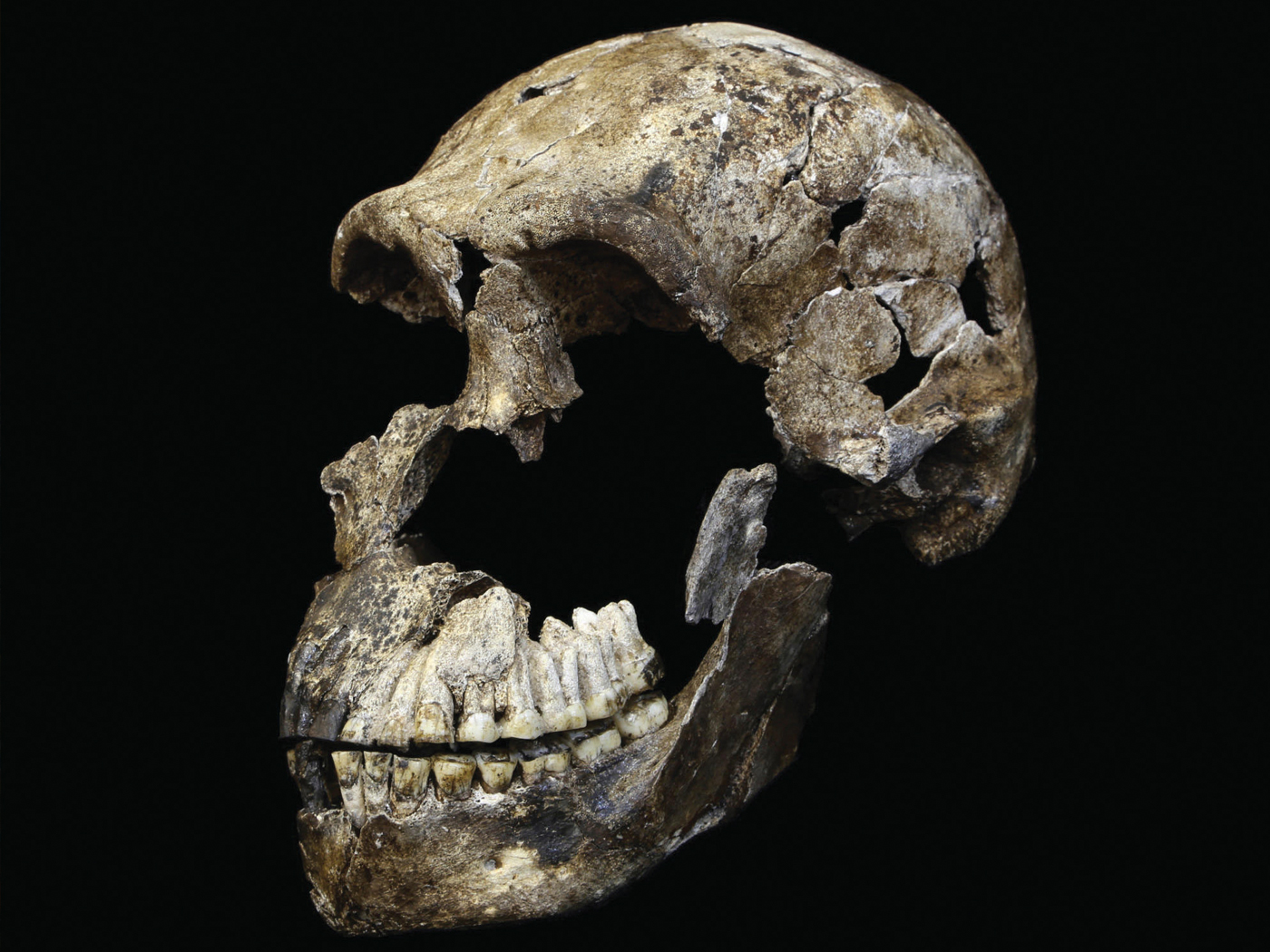Prigogine's speculative model is enshrouded with a considerable amount of complex mathematics that is difficult if not impossible to understand by nonmathematicians. This immediately renders it incomprehensible to most scientists, certainly to most biologists. Nevertheless, Prigogine's model sounds deliciously scientific and it has been eagerly welcomed by evolutionists who are looking for a way to overcome the insuperable barrier the Second Law of Thermodynamics poses against an evolutionary origin of life. When Prigogine moves his mathematical model off of paper and out into the real world, however, it then becomes possible for a nonmathematician to examine the chemical and biological assumptions which serve as the basis of his model. An examination of these assumptions reveals that they are totally devoid of any foundation. His model offers no solution whatsoever.
In Prigogine's "evolution model",1 a system open to the flow of two monomer species a and b (which may correspond to two kinds of nucleotides, for example, adenylic acid and thymidylic acid) is assumed. Although he doesn't say much about it, a steady in-flow of energy in the form of energy-rich organic chemical molecules must also somehow be provided, and a way must exist to link this in-flow of energy to the synthetic process assumed in the model. Right at this preliminary stage, even before the more serious difficulties of his model are encountered, the model loses all plausibility.
In the absence of living organisms, it would be impossible to supply a sufficient quantity of either the nucleotides or the energy-rich organic molecules to provide the required concentration of these molecules. Under any plausible primitive earth conditions, the rate of destruction of these compounds would so far exceed their rate of formation that no detectable quantities of either could ever accumulate.2,3
Even if the ocean were swarming with these molecules, however, Prigogine's model could not explain how life could have evolved. From monomer a, which for the purpose of illustration Prigogine takes to be the nucleotide, adenylic acid (A), Prigogine assumes that the homopolymer, poly-adenylic acid (poly-A) is formed. Poly-A codes for (provides the template for) poly-thymidylic acid (poly-T), so in the presence of poly-A and a supply of thymidylic acid, Prigogine assumes that poly-T will form. Since poly-A not only codes for poly-T, but poly-T codes for poly-A, Prigogine asserts that when this stage is reached, an autocatalytic cycle is switched on. Let us pause here to examine assumptions made at this stage of the model.
First of all, Prigogine assumes that the monomers (the nucleotides) will combine to form polymers in huge quantities (many billions of tons of each polymer must form in order to produce a significant concentration in an ocean containing 350 million cubic miles of water). Actually, for all practical purposes, no polymer at all could form. To form the bonds linking the monomers to form the polymer requires an input of energy. As a consequence this process is energetically highly unfavorable. Rupture of the bonds linking the nucleotides in the polymer, or rupture of the bonds within each nucleotide sub-unit (such as the sugarpurine bond), on the other hand, releases energy and is thus energetically favorable. Furthermore, to form a polymer of, say 100 nucleotides, requires the formation of 100 inter-nucleotide bonds, the formation of each bond being energetically highly unfavorable. The destruction of the polymer, however, requires the rupture of only a single bond, the rupture of which releases energy and is thus energetically favorable. As a consequence, formation of polymer of even just a few nucleotides would be incredibly slow, but if any polymer did exist, it would break down at a relatively rapid rate. The rate of destruction would enormously exceed the rate of formation, and thus no significant concentration of polymer, even of a di-nucleotide, could form under any plausible primitive earth conditions.
Secondly, even if formation of polymer occurred at a significant rate to produce a significant overall amount of polymer, with two monomers present, such as adenylic acid (A) and thymidylic acid (T), it would still be impossible for a significant amount of a particular polymer to form. How in the world would formation of polymers be restricted to poly-A (A-A-A-A-A-A-A-A----A) and poly-T (T-T-T-T-T-T-T-T ----- T)? Every possible sequence of A and T would form. For example, the polymer T-A-A-T-A-T-T-T-A-T-A-A-A-T-T, or any other sequence of A and T, would be just as likely to form as a polymer containing 15 A's or 15 T’s exclusively. If polymers of 100 nucleotides were formed under assumed primitive earth conditions from only two monomers, 2100 (1030, or a million billion billion) different combinations would be produced. This would completely eliminate the possibility of producing a significant quantity of any one particular polymer.
Thirdly, to claim that the presence of two polymers, such as poly-A and poly-T, would establish an autocatalytic cycle is sheer nonsense. Such a system could not be autocatalytic, since neither poly-A nor poly-T (or any other polynucleotide) is catalytic. Neither has the ability to speed up any chemical reaction, in this case the rate at which the bonds linking the nucleotides are formed. Thus neither can be called a catalyst. Prigogine nevertheless calls the assumed cycle autocatalytic, since poly-A codes (provides a template) for poly-T, which in turn codes for poly-A. Thus, he asserts, the rate of production of poly-A would at least be proportional to its concentration. But what Prigogine neglects to mention is that the rate of destruction of poly-A (or poly-T) would also, be proportional to its concentration. Since both the rate of production and the rate of destruction would tend to increase as the concentration tended to increase, no net effect on the overall concentration would result.
But now, going on with further assumptions in Prigogine's model (in spite of the impossibilities encountered so far), Prigogine assumes that in the formation of poly-A under the coding action of poly-T, errors occur, and as a result a new polymer is formed (let us call it polymer-X). Polymer-X, Prigogine assumes, may now direct the synthesis of a new substance E. He further assumes that E might possibly be a "primitive" protein enzyme which catalyzes the production of polymer-X, as well as its own production. The appearance of this catalyst, it is assumed, produces polymer-X at a much more rapid rate than either poly-A or poly-T is being produced, so the system rapidly shifts far from equilibrium until a new equilibrium is established. Now let us pause once again to see what is wrong with Prigogine's assumptions.
Firstly, no polynucleotide can direct the synthesis of a protein. All enzymes are proteins, and consist of long chains of amino acids. In living organisms the gene (a polynucleotide consisting of deoxyribonucleic acid or DNA) for each protein provides only the code for the sequence in which the amino acids occur in the protein, and that is all it does. The translation of this information, and the actual synthesis of the protein, requires much, much more.
DNA is only one of many different kinds of molecules required for the synthesis of a protein. To assert that a DNA molecule could direct the synthesis of a protein in the absence of the entire complex apparatus required for this task is simply absurd.
Furthermore, to say that the process was much simpler in the first step toward a living thing is totally contradicted by the evidence. For example, amino acids cannot align themselves along either a DNA or an RNA molecule. There is no "lock-and-key" fit, or any other kind of fit, between any amino acid and any nucleotide. It is chemically and physically impossible, for this reason alone, then, for a DNA or RNA molecule to "direct" the synthesis of a protein. In fact, the chemistry that would naturally occur would wreak havoc on any evolving life.
Secondly, no enzyme is capable of catalyzing both the synthesis of a polynucleotide, such as DNA or RNA, and itself. Thus, there is no enzyme known that catalyzes the formation of chemical bonds between nucleotides to form polynucleotides, and which also catalyzes the formation of chemical bonds between amino acids to form proteins. The chemistry involved in the formation of inter-nucleotide bonds is just too different from the chemistry involved in the formation of chemical bonds between amino acids for that to be possible.
Thirdly, as mentioned above, Prigogine assumes that the "primitive enzyme" catalyzes the production of polymer-X, which codes for his "primitive enzyme." The action of an enzyme cannot be restricted to the formation of any particular polynucleotide, however. There is a single DNA-polymerase in a cell which catalyzes the formation of all DNA molecules. Thus, if Prigogine's hypothetical primitive enzyme did arise, it would not only catalyze the formation of polymer-X, but it would also catalyze the formation of every other polynucleotide that could possibly exist. Thus it would catalyze the formation of the original polymers, poly-A and poly-T, just as readily as it would catalyze the formation of polymer-X. Polymer-X, since it arose originally in a very small amount by error, would remain in very small quantity, relative to the original polymers.
Fourthly, the possibility that just by chance an error in the synthesis of poly-A would produce a new polymer (polymer-X) that is capable of directing the synthesis of a primitive enzyme defies the laws of probability, even if a polynucleotide could indeed direct the synthesis of a protein. No one knows just how an enzyme is capable of catalyzing a particular chemical reaction, but we do know that for the catalysis of a particular chemical reaction only one, or a very few, of the almost infinite possible arrangements of the amino acids in the protein enzyme will work. Each particular chemical task establishes rigid limits on what particular molecules can act as catalysts.
Most present day enzymes consist of protein molecules containing several hundred amino acids (there are 20 different kinds of amino acids in these proteins). Thus, even a "primitive" enzyme would probably require at least a hundred amino acids. No one really knows, of course, for we have no "primitive" enzymes to study today. Usually the removal of just a few amino acids from either end of present day enzymes completely destroys their activity, leaving nothing that possesses "primitive" enzyme activity. If we assume, however, that the "primitive" enzyme consists or 100 of the 200 different amino acids that now exist in proteins and that a hundred billion (1011) different possible arrangements of these 100 amino acids, rather than only one or a very few, precise arrangements (as is true in present day living things) might be able to function as the primitive enzyme, the possibility by chance of getting even a single molecule, let alone billions of tons, of any one of these hundred billion primitive enzymes would essentially be nil.
One hundred amino acids of 20 different kinds can be arranged in 20100 (10130) different ways. If 1011 of these could function as the primitive enzyme, and if a billion trillion (1021) of the various protein molecules of 100 amino acids formed each second for five billion years (approximately 1017 seconds) the chance of getting a single molecule of one of the required sequences is 10130/1021 x 1017 x 1011, or only one chance out of 1081. This is, for all practical purposes, equal to zero probability, since on a cosmic scale the value of negligible probabilities may be set at 1/1050.4
Summarizing, in Prigogine's model he assumes:
- A steady net production of enormous quantities of nucleotides and amino acids on the hypothetical primitive earth by the simple interaction of raw energy and simple gases.
- A steady net production of enormous quantities of energy-rich organic molecules to supply the required energy.
- The combination, in enormous quantities, of the nucleotides to form polymers (DNA).
- The selective formation of homopolymers (such as poly-A and poly-T) rather than the formation of mixed polymers of random sequences.
- The establishment of an autocatalytic cycle.
- Errors in the formation of the polymers producing a new polymer which directs the synthesis of a primitive protein enzyme.
- The primitive protein enzyme catalyzes the formation of both itself and the nucleotide polymer (DNA).
- The above molecules somehow manage to spontaneously separate themselves from the rest of the world and concentrate into condensed systems coordinated in time and in space.
Not a single one of the above assumptions has any shred of probability under any plausible primitive earth conditions. Improbability piled on improbability equals impossibility.
A mathematical model of almost any imagined process can be made to work on paper as certain assumptions are made. When the model is moved off the paper and out into the real world of chemistry and physics and the assumptions of the model are translated into processes which can actually be tested, it then becomes possible to determine whether the model has any validity. As can be seen from the above discussion, Prigogine's model has no validity whatsoever.
References
1 I. Prigogine, G. Nicolis, and A. Babloyantz, Physics Today, Dec. 1972, p. 42.
2 D.T. Gish, Speculations and Laboratory Experiments Related to Theories on the Origin of Life: A Critique, Creation-Life Publishers, San Diego, 1972.
3 D.T. Gish, "Origin of Life: Critique of Early Stage Chemical Evolution Theories" (ICR Impact Series No. 31) Acts and Facts, January 1976.
4 Emil Borel, Probabilities and Life, Dover Pub. Co., New York, 1962, p. 28.
* Part 1, by Henry M. Morris, appeared in the March, 1978 Acts and Facts as Impact No. 57. These articles are in response to suggestions that Dr. Ilya Prigogine, a 1977 Nobel Prize winner in physics, has solved the problem the 2nd Law of Thermodynamics poses for an evolutionary origin of life.
** Dr. Gish is Vice President of the Institute for Creation Research.
















